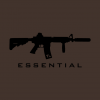You're right, but MILSPEC is a specification and even at the minimum, it still meets the standard. The other wonder steels used and special bolts are merely marketing without the thorough and expensive testing mentioned above. MILSPEC bolts have a 60 year track record, 9310 and the other enhanced bolts do not.




 Reply With Quote
Reply With Quote



Bookmarks